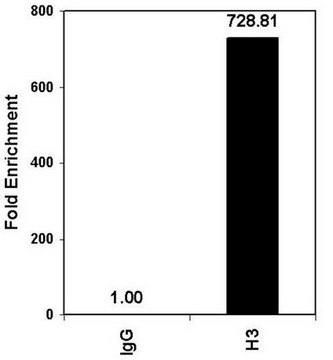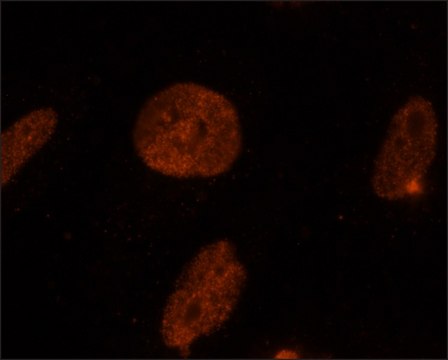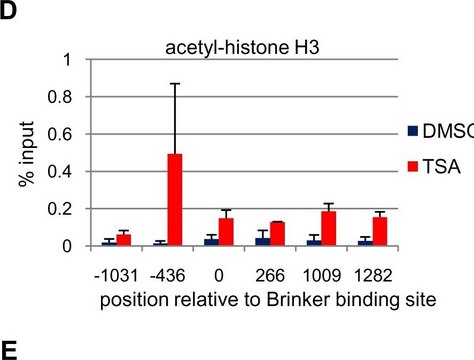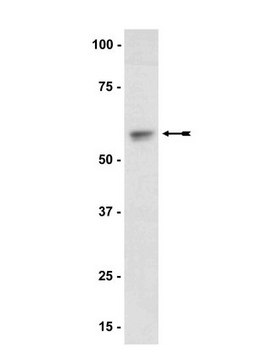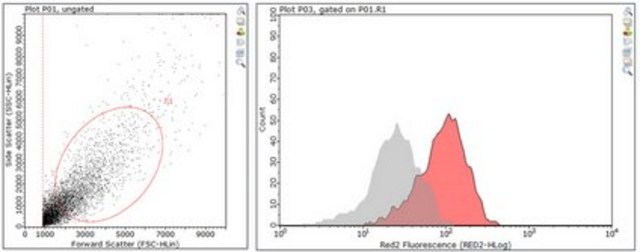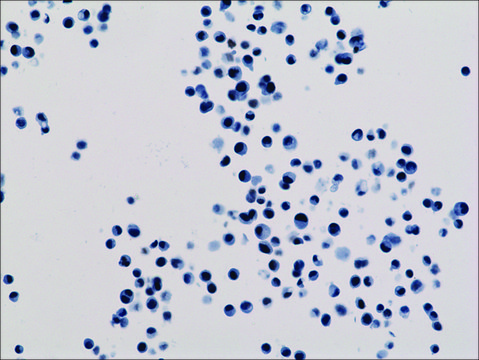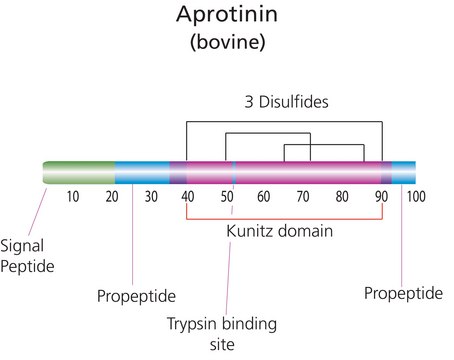ABE101-S
Anti-monomethyl-Histone H3 (Lys9) Antibody, Trial Size
from rabbit, purified by affinity chromatography
Sign Into View Organizational & Contract Pricing
All Photos(1)
Synonym(s):
H3K9me1, Histone H3 (monomethyl K9), H3 histone family, member T, Histone 3, H3, Histone cluster 3, H3
UNSPSC Code:
12352203
eCl@ss:
32160702
NACRES:
NA.41
Recommended Products
biological source
rabbit
Quality Level
antibody form
purified antibody
antibody product type
primary antibodies
clone
polyclonal
purified by
affinity chromatography
species reactivity
human
technique(s)
dot blot: suitable
immunocytochemistry: suitable
inhibition assay: suitable (peptide)
western blot: suitable
NCBI accession no.
UniProt accession no.
shipped in
wet ice
target post-translational modification
monomethylation (Lys9)
Gene Information
human ... HIST1H3F(8968)
General description
Histone H3 is one of the five main histone proteins involved in the structure of chromatin in eukaryotic cells. Featuring a main globular domain and a long N-terminal tail, H3 is involved with the structure of the nucleosomes of the ′beads on a string′ structure. The N-terminal tail of histone H3 protrudes from the globular nucleosome core and can undergo several different types of epigenetic modifications that influence cellular processes. These modifications include the covalent attachment of methyl or acetyl groups to lysine and arginine amino acids and the phosphorylation of serine or threonine.
Specificity
Broad species cross-reactivity is expected based on sequence homology.
This antibody recognizes Histone H3 methylated at Lys9.
Immunogen
Epitope: Lys9
KLH-conjugated branched peptide corresponding to human Histone H3 methylated at Lys9.
Application
Anti-monomethyl-Histone H3 (Lys9) Antibody, Trial Size is a rabbit polyclonal for detection of Histone H3 monomethylated on lysine 9. Also known as H3K9me1, this antibody has dot blot proven specificity, and has been validated in WB, ICC, PIA. Small pack size is ideal for screening.
Immunocytochemistry Analysis: 1:500 dilution from a representative lot detected Histone H3 in HeLa and A431 cells.
Peptide Inhibition Analysis: 1:10,000 dilution from a representative lot was used with HeLa acid extract for peptide block analysis.
Peptide Inhibition Analysis: 1:10,000 dilution from a representative lot was used with HeLa acid extract for peptide block analysis.
Research Category
Epigenetics & Nuclear Function
Epigenetics & Nuclear Function
Research Sub Category
Histones
Histones
Quality
Evaluated by Western Blot in HeLa acid extract lysate.
Western Blot Analysis: 0.1 µg/ml of this antibody detected Histone H3 on 10 µg of HeLa acid extract lysate.
Western Blot Analysis: 0.1 µg/ml of this antibody detected Histone H3 on 10 µg of HeLa acid extract lysate.
Target description
~ 17 kDa
Linkage
Replaces: 07-395
Physical form
Affinity purified
Purified rabbit polyclonal in buffer containing 0.1 M Tris-Glycine (pH 7.4, 150 mM NaCl) with 0.05% sodium azide.
Storage and Stability
Stable for 1 year at 2-8°C from date of receipt.
Analysis Note
Control
HeLa acid extract lysate
HeLa acid extract lysate
Other Notes
Concentration: Please refer to the Certificate of Analysis for the lot-specific concentration.
Disclaimer
Unless otherwise stated in our catalog or other company documentation accompanying the product(s), our products are intended for research use only and are not to be used for any other purpose, which includes but is not limited to, unauthorized commercial uses, in vitro diagnostic uses, ex vivo or in vivo therapeutic uses or any type of consumption or application to humans or animals.
WGK
WGK 1
Flash Point(F)
Not applicable
Flash Point(C)
Not applicable
Certificates of Analysis (COA)
Search for Certificates of Analysis (COA) by entering the products Lot/Batch Number. Lot and Batch Numbers can be found on a product’s label following the words ‘Lot’ or ‘Batch’.
Already Own This Product?
Find documentation for the products that you have recently purchased in the Document Library.
Yichen Ge et al.
Toxicology and applied pharmacology, 355, 164-173 (2018-07-04)
Arsenic is a known potent risk factor for bladder cancer. Increasing evidence suggests that epigenetic alterations, e.g., DNA methylation and histones posttranslational modifications (PTMs), contribute to arsenic carcinogenesis. Our previous studies have demonstrated that exposure of human urothelial cells (UROtsa
Our team of scientists has experience in all areas of research including Life Science, Material Science, Chemical Synthesis, Chromatography, Analytical and many others.
Contact Technical Service
